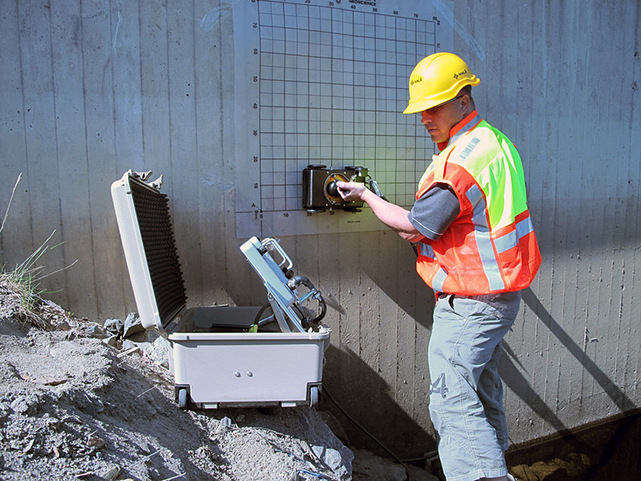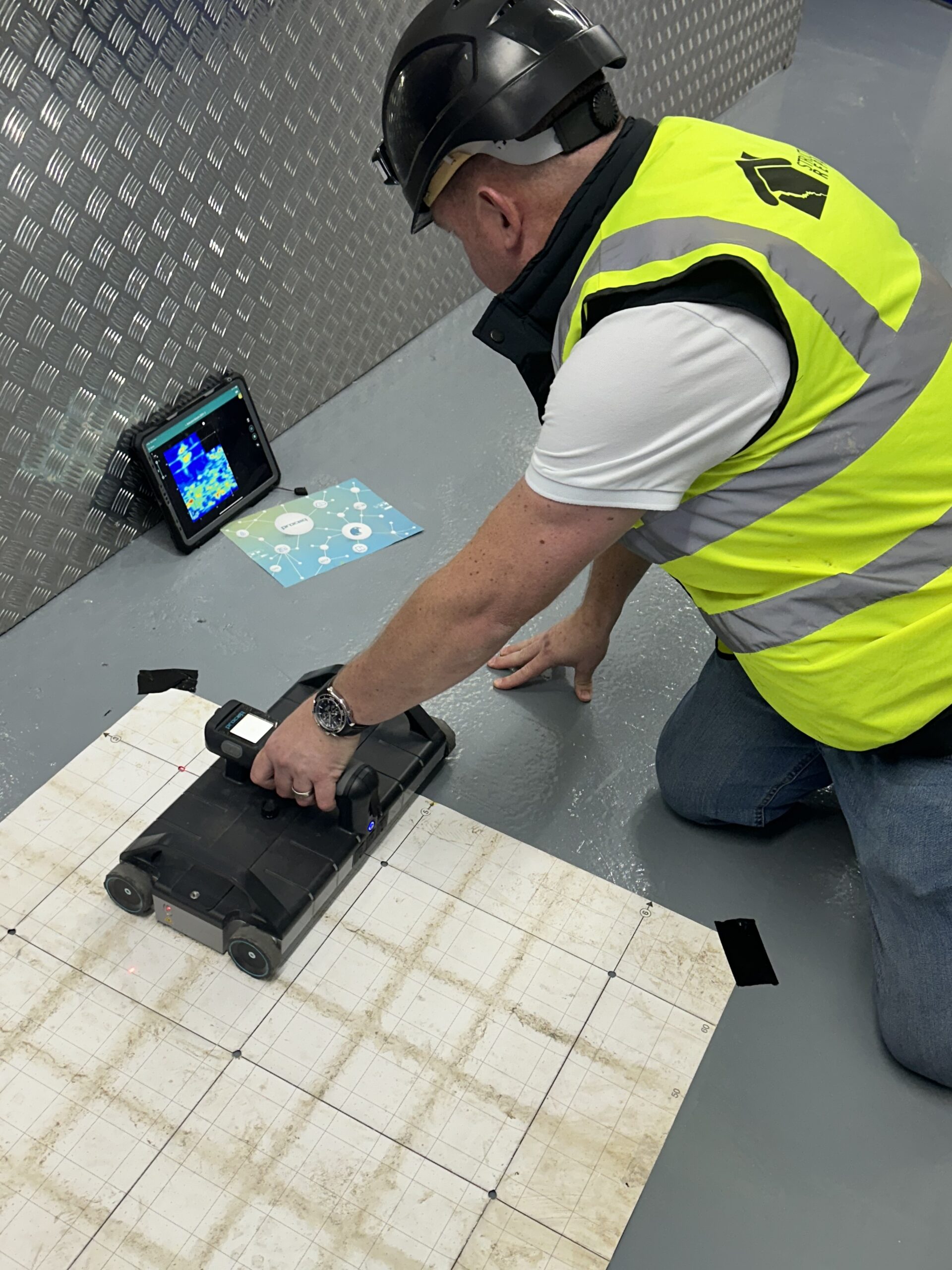RainierGPR Concrete Scanning: Precision and Security for Building Tasks
RainierGPR Concrete Scanning: Precision and Security for Building Tasks
Blog Article
The Relevance of Specific Concrete Scanning in Finding Underground Hazards
In the world of building and infrastructure growth, the value of specific concrete scanning can not be overemphasized. Beneath the apparently strong ground lie detailed networks of utilities, pipelines, and other subsurface frameworks that are frequently unseen to the nude eye. The capability to precisely discover and map these below ground dangers is not simply a matter of comfort but a vital element of making sure the safety of both building and construction workers and the integrity of the job itself. By releasing innovative scanning modern technologies and methods, experts can discover covert threats, stop expensive problems, and inevitably lead the method for smoother and much safer building and construction ventures.
Advanced Scanning Technologies for Discovery
Innovative radar systems are reinventing the area of underground detection by supplying unrivaled accuracy and efficiency. These sophisticated scanning modern technologies use ground-penetrating radar (GPR) to produce thorough photos of subsurface frameworks, providing understandings right into what lies below the surface with impressive quality. By releasing high-frequency pulses into the ground and determining the reflections, radar systems can determine variations in material structure and discover underground risks such as spaces, cable televisions, and pipes.
Among the essential advantages of these innovative radar systems is their non-invasive nature, permitting thorough examinations without creating damages to the existing frameworks. This not just ensures the safety and security of the surrounding setting yet also lessens the requirement for costly repair work or disturbances to continuous building and construction tasks. In addition, the real-time information given by these scanning modern technologies makes it possible for quick decision-making and enhances general project efficiency.
Importance of Subsurface Mapping

Accurate subsurface mapping helps in avoiding expensive problems to existing below ground framework, lowering the risk of crashes, and maintaining project timelines. It enables project supervisors to make informed decisions pertaining to website preparation, tools deployment, and resource allotment. Additionally, subsurface mapping enables better control among different teams working with a task and helps in adhering to regulatory requirements connected to underground energy discovery.
Mitigating Risks in Construction Tasks
Efficient threat reduction methods are necessary for ensuring the success and security of building and construction jobs. Determining and attending to possible dangers before they rise is vital in preserving job timelines, spending plans, and total top quality. One key facet of mitigating dangers in construction jobs is complete planning and analysis at the first stages. Conducting thorough site studies, consisting of accurate concrete scanning for below ground threats, can help in determining prospective issues early on. Using sophisticated modern technologies like ground-penetrating radar and electromagnetic induction can assist in finding energies, rebar, or various other obstructions that may posture dangers throughout building and construction.
In addition, developing clear interaction networks among all job stakeholders and making certain stringent adherence to security procedures are crucial components of risk mitigation. Normal assessments, top quality control measures, and monitoring of work progress can aid in determining and resolving any emerging threats immediately. Moreover, having backup strategies in position for unanticipated difficulties can significantly minimize the influence of disturbances on the job. By proactively executing robust risk mitigation strategies, building projects can minimize hold-ups, expense overruns, and safety and security cases, eventually resulting in successful task results.

Protecting Against Costly Damages and Hold-ups
To minimize monetary losses and job troubles, effective strategies have to be applied to stop costly damages and hold-ups in building and construction jobs. Determining these obstructions early on aids in intending the task design a lot more effectively and preventing prospective problems during excavation.
In addition, purchasing training programs for building and construction employees on the relevance of concrete scanning and safe excavation practices can significantly lower the danger of hold-ups and mishaps. Clear interaction networks in between task managers, engineers, and on-site workers are likewise important to ensure that every person recognizes the possible risks and complies with the necessary procedures to stop expensive damages. By focusing on aggressive steps like concrete scanning and advertising a society of safety and security and understanding, building and construction tasks can reduce the financial impact of unforeseen below ground blockages and avoid expensive delays.
Ensuring Safety And Security of On-Site Personnel
By prioritizing positive steps such as thorough training programs and clear interaction networks, building jobs can ensure the security of on-site employees amid the possible threats identified via concrete scanning. Proper training gears up employees with Find Out More the expertise and abilities needed to navigate construction websites safely, especially when risks are identified through scanning processes. Training ought to cover risk recognition, emergency procedures, and the appropriate utilization of personal safety equipment to minimize threats properly.
Additionally, establishing clear interaction channels is crucial for sharing information regarding identified dangers promptly. This guarantees that all on-site workers know possible dangers and can take required precautions to prevent mishaps. Routine security rundowns, tool kit talks, and regular updates pertaining to scanning results help maintain everybody notified and proactive in maintaining a safe functioning environment.
Furthermore, applying strict adherence to safety procedures and guidelines, conducting regular security audits, and fostering a culture of safety consciousness among employees are important components in making certain the wellness of on-site personnel during construction tasks - RainierGPR Concrete Scanning. Positive precaution not only secure employees from harm but also add to the general success and performance of the task
Conclusion
Finally, precise concrete scanning plays a vital duty in detecting below ground threats. Utilizing advanced scanning innovations and subsurface mapping helps reduce threats in building jobs, avoiding expensive damages and delays. By making sure the security of on-site personnel, exact scanning can significantly enhance the performance and success of building and construction procedures. It is important for building and construction business to focus on using exact scanning methods to decrease potential hazards and guarantee a smooth building and construction process.

By proactively applying durable danger reduction strategies, construction projects can decrease hold-ups, expense overruns, and safety and security incidents, ultimately leading to successful job end results. - RainierGPR Concrete Scanning
To reduce economic losses and job setbacks, efficient methods need to be carried see this here out to protect against costly damages and delays in building jobs. By focusing on positive measures like concrete scanning and promoting a society of safety and security and awareness, building tasks can reduce the monetary influence of unforeseen below ground obstructions and prevent expensive hold-ups.
By click to investigate focusing on proactive procedures such as thorough training programs and clear interaction channels, construction projects can guarantee the security of on-site employees amid the potential hazards spotted with concrete scanning. Making use of innovative scanning modern technologies and subsurface mapping aids alleviate threats in building and construction projects, preventing costly damages and hold-ups.
Report this page